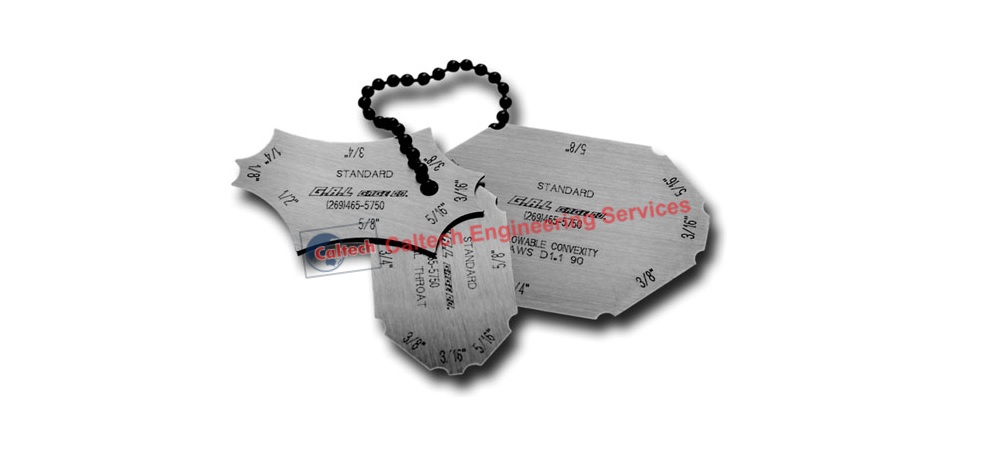The Duty of Gauge Fillet Weld in Structural Integrity: What You Need to Know
The Duty of Gauge Fillet Weld in Structural Integrity: What You Need to Know
Blog Article
Fillet Weld Layout Approaches: Optimizing Joint Efficiency and Appearance for Structural Stability
In the realm of architectural design and construction, the significance of fillet weld layout methods can not be overemphasized. By thoroughly taking into consideration factors such as weld account optimization, material option, joint preparation techniques, welding process effectiveness, and aesthetic enhancement techniques, engineers and producers can attain an unified balance in between performance and look in their welded structures.
Weld Profile Optimization


Attaining an ideal weld profile includes a precise factor to consider of elements such as material density, joint setup, welding position, and preferred welding speed. Furthermore, the selection of appropriate welding specifications, such as voltage, current, and travel rate, is basic in regulating the shape and measurements of the fillet weld. Utilizing advanced welding techniques, such as pulse welding or robot welding, can better refine the weld account to satisfy details style requirements and top quality criteria.
In significance, weld profile optimization is a basic aspect of fillet weld style that straight affects the general efficiency and integrity of welded joints in architectural applications.
Product Choice Considerations
When considering product choice for fillet weld design, the compatibility of the base steels is a vital variable affecting the structural honesty of the joint. It is necessary to pick materials that not just weld with each other efficiently however likewise have similar mechanical residential or commercial properties to guarantee the lots is equally distributed in between the weld and the base metals. Welding products with vastly different homes can result in concerns such as anxiety focus, early joint failing, or splitting.
In addition, the setting in which the welded framework will certainly run have to be considered when picking materials. Elements like rust resistance, temperature fluctuations, and exposure to chemicals can all impact the long life and efficiency of the weld joint. By selecting products that appropriate for the desired application and environment, the overall longevity and integrity of the welded joint can be significantly enhanced.
Consequently, detailed factor to consider of material compatibility and environmental factors is vital in guaranteeing the weld joint's stamina, longevity, and overall architectural integrity.

Joint Preparation Techniques
Thinking about the important function product choice plays in guaranteeing the architectural stability of fillet weld joints, it is essential to carry out precise joint prep work strategies that optimize the connection in between the base metals. Joint preparation is a critical step that directly affects the top quality and toughness of the weld.
Additionally, correct fit-up of the joint is necessary to guarantee consistent distribution of the welding material and protect against problems like incomplete infiltration or too much accumulation. Beveling the sides of the base steels can produce a groove that permits much deeper weld infiltration and a stronger bond. Additionally, tack welding the components in location before the last weld helps maintain placement and reduces distortion throughout the welding process. By diligently adhering to these joint prep work methods, welders can improve the overall performance and visual appeals of fillet weld joints while making certain architectural soundness.
Welding Refine Efficiency
Efficient welding processes are essential for achieving optimum performance and top quality click for info in fillet weld fabrication. One crucial aspect of improving welding procedure performance is choosing the appropriate welding method. Aspects such as material type, joint design, and welding position have to be carefully taken into consideration to determine one of the most ideal approach. Procedures like gas metal arc welding (GMAW) and flux-cored arc welding (FCAW) are generally used for fillet welds due to their adaptability and rate.
In addition, ensuring correct equipment arrangement and upkeep is essential for reliable welding. Normal calibration of welding devices, examination of consumables, and upkeep of soldering iron can protect against downtime and revamp, ultimately saving time and resources. Additionally, using experienced welders with experience in the certain welding process being made use of can significantly affect performance. Trained more information welders are extra skilled at adjusting criteria, repairing concerns, and keeping regular weld high quality.
Aesthetic Enhancement Methods
To enhance the quality of fillet weld construction, applying aesthetic enhancement techniques can play a crucial role in guaranteeing accuracy and precision during the welding process. Visual help such as weld size evaluates and multiplying lenses can aid in assessing weld profiles and dimensions accurately. By incorporating these visual enhancement approaches into the welding process, welders can accomplish not only structurally audio fillet welds yet also visually enticing outcomes that fulfill sector standards.

Verdict
In conclusion, maximizing fillet weld design includes cautious consideration of weld account, product choice, joint preparation, welding process effectiveness, and aesthetic improvement techniques. By applying these strategies, architectural integrity can be enhanced while additionally attaining aesthetic charm. It is necessary to prioritize both efficiency and visual appeals in fillet weld style to make certain the overall quality and toughness of the joint.
By thoroughly thinking about variables such as weld account optimization, product selection, joint prep work techniques, welding procedure performance, and aesthetic improvement fabricators, engineers and techniques can attain a harmonious equilibrium in between functionality and appearance in their welded structures.In the advice realm of fillet weld layout, enhancing the weld profile plays an essential duty in guaranteeing structural stability and efficiency. The weld profile, which includes the size and form of the weld cross-section, straight affects the distribution of tension and load-bearing ability within the joint. It is necessary to pick products that not just bonded with each other effectively yet also possess similar mechanical properties to guarantee the lots is uniformly dispersed between the weld and the base steels - Gauge Fillet Weld.In verdict, optimizing fillet weld style entails careful consideration of weld profile, material choice, joint prep work, welding procedure performance, and aesthetic improvement techniques
Report this page